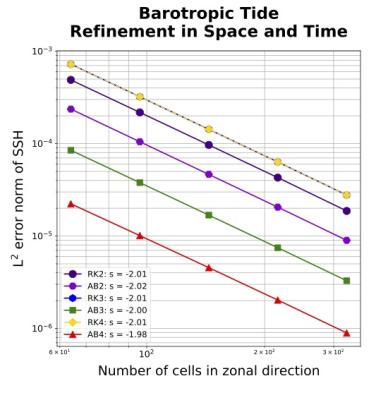A Standard Set of Test Cases for Ocean Model Development
Climate model components rely on thorough testing under precise conditions so that they may be applied with confidence to real-world applicaitons. This suite of test cases provides a series of exact solutions for ocean modelers to follow in developing and verifying new computer codes for ocean currents.
This publication serves as an educational text and a useful tool for ocean model developers. Well-documented verification test cases accelerate model development and ensure the accuracy of the model solution. Stephen Griffies of NOAA, the editor, said this publication will serve as a “standard reference for ocean modelers for decades to come.”
Before running an atmosphere, ocean, or a coupled climate simulation, every model developer should ensure the correct implementation of each term in the governing equations that drive the models forward in time. This motivates the development of idealized test cases, each of which verifies a subset of terms in the governing equations with different initial and boundary conditions. Here we present a suite of six test cases for the momentum equation and sea surface height equation for ocean models in a single-layer configuration. The computed results from the ocean model can be compared to exact solutions. The computed solution always has a small error but is said to converge to the exact solution with a reduction in grid cell size and time step. If the model converges at the expected rate, then we know that it is solving the governing equations correctly. We show results of convergence tests from two models, and share the full specifications of these test cases so that other ocean modelers may reproduce them.

